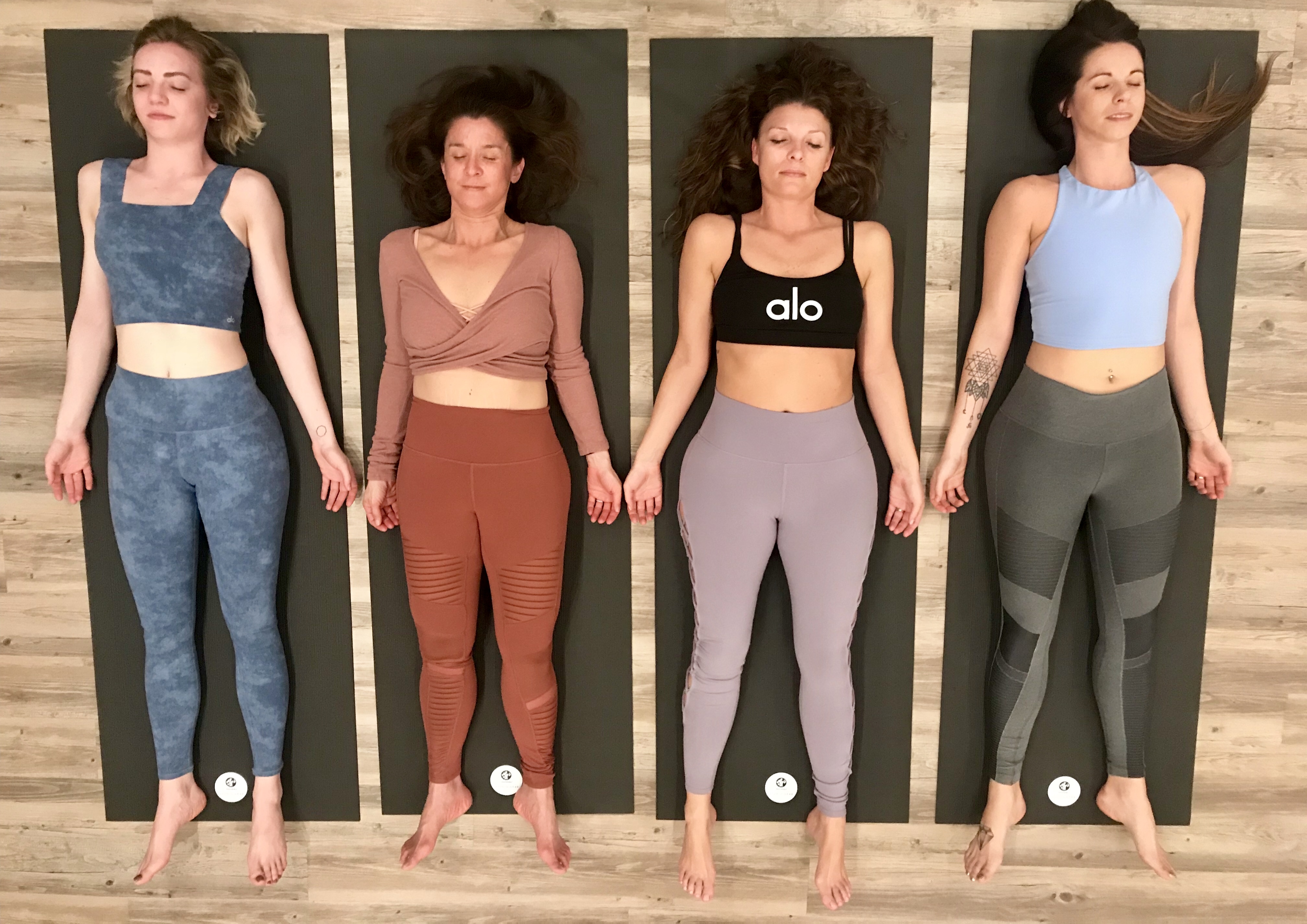Sleep is a vital part of our human experience here on this earth, and yogis may possess a secret too deep relaxation and allowing our bodies a few minutes of daily rest to support mental fortitude and wellness, as well as healthy sleep patterns. From savasana to a practice called yoga nidra, I conversed with several insightful yoga instructors about the benefits of incorporating stillness and relaxation into our daily routines.
Savasana, also known as corpse pose, allows the breath to flow throughout the entire body. The posture is practiced by lying on your back on a yoga mat with your palms facing the sky and the feet naturally relaxed out to the sides. This state of total relaxation can offer benefits such as stress relief, improved mental health, stimulated blood circulation, and can aid in releasing anxiety, depression, and tension. Five minutes of surrendering your body in savasana can be extremely helpful in our busy lives.
Instagram yoga sensation Alissa Kepas discusses savasana as the whole point of the physical yoga practice, “During any given session, you move the body and breathe in specific ways to be able to completely let go and surrender at the end of the exercises. You truly become like a corpse to rejuvenate and renew the body- this is why I think yoga is popular in the Western World. Most of us are super overloaded with information screens. Savasana provides a break from all of the noise, so you can realize who you are.”
Savasana is a typical way to start or end an asana practice. Mya Saldivar, the owner of Suvita Hot Yoga, added “Many struggle the most in savasana at the end of the yoga practice because it requires complete stillness. Being still is one of the hardest poses, yet when students relax into savasana it changes their practice, their breath, and even increases their ability to find calmness outside of the yoga room.”
Finding a deeper stillness is the practice known as the yoga of sleep. Yoga Nidra allows the body to sleep while the mind rests in a meditative consciousness. Blankets, pillows, and eye masks are encouraged, as this practice is also done lying down. My yoga nidra instructor, Tracee Stanley, may explain this practice the best, “It is not possible for us to catch up on sleep. But there is a way for us to improve our sleep hygiene and create the best opportunity for a great nights sleep. The practice of Yoga Nidra is the way. The practice teaches us how to truly let go and surrender into profound deep relaxation. At the deeper levels of experience, a practitioner may experience deep non-REM sleep yet remain aware of their surroundings. It is often said that 45 minutes of yoga nidra is equivalent to 2-4 hours of sleep. After practicing for a while you may notice that the hours that you need to sleep decrease as your quality of sleep improves and that you are waking up feeling refreshed with less sleep than normal. “
Both savasana and yoga nidra are something anyone can do. Most consider yoga to be all about how far one can bend or if one can hang upside down in a head or handstand when in fact it is all about connecting to the breath. The yoga of sleep is not intimidating with poses, only a comfortable relaxation method that is full of benefits to each and every person. Yoga Nidra is the ultimate practice of not doing, something needed when life demands so much. When we slow our breath and close our eyes, we remove ourselves from all the noise surrounding us and help shift perspective. Robbin Rubio of Free Spirit Retreats expressed it simply, “Our minds are always screaming, turned on and taking in so much. Yoga sleep is a place we can quiet the mind and listen to the whispers of the heart.”
The guided practice of yoga nidra and savasana encourages rest and conscious transformation. Don’t be surprised if yoga sleep classes become the next big thing. Everyone from busy executives, parents, and those suffering from illness, anxiety, and depression, are discovering huge benefits from this practice. For best results, yoga nidra should be practiced in the morning or daytime, and should not be used as a sleep replacement.
Yoga sleep could be the key to supplementing downtime in our busy lives.


